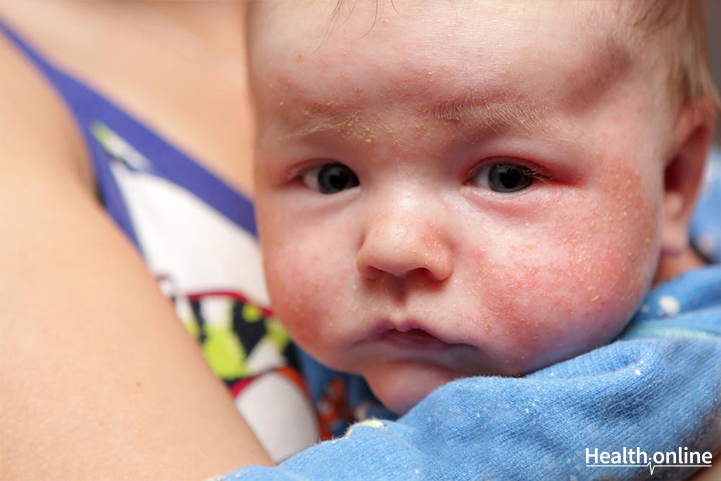
The Differences Between Cradle Cap and Baby Eczema
Parents often get confused between cradle cap and baby eczema (or atopic dermatitis). Both skin conditions present as patches of red, rough, crusty, itchy, and inflamed skin during the first few months of a newborn’s life. If red, flaky skin appears on baby’s scalp, head, and face there can be some confusion as to whether the condition is cradle cap or infant eczema. If your baby shows signs of either very treatable condition, please consult with a doctor as soon as possible who will look for these key differences:
- While cradle cap typically appears in similar red and scaly patches of skin, this condition will appear in only certain areas (i.e., behind the ears, on the scalp, eyelids, eyebrows, cheeks, and on the sides of the nose). Cradle cap typically doesn’t persist past 8 months of age, when most infants outgrow the condition.
- Baby eczema, on the other hand, can affect any part of the body—including the same areas as cradle cap (i.e., scalp, face, behind the ears, etc.) plus just about anywhere else on baby’s body with a prevalence to develop on the inner joints of the arms and legs (i.e., elbows, knees, etc.).
Recommended Read: The Diagnosis of Eczema
Causes of cradle cap vs. baby eczema
Doctors suspect that cradle cap is the result of hormones, passed onto baby from mom, close to the end of her pregnancy. These hormones trigger the seborrheic glands (which produce oil) and can cause yeast to grow in the sebum (oil) and irritation of the skin to occur. Infant eczema, on the other hand, tends to be passed down from parents to the baby, so if the parents suffer from eczema, chances are higher that baby may also develop atopic dermatitis at an early age. As opposed to cradle cap, eczema is caused due to low amounts of ceramides (or fatty cells), which affects skin moisture and results in a compromised skin barrier, which can lead to dryness, irritation, and infection. Neither cradle cap nor baby eczema is contagious.
To prevent cradle cap and baby eczema outbreaks, doctors will advise caregivers to avoid the following triggers:
- Stress and anxiety : Yes, babies can experience stress and it often shows on their skin. Look for the presence of skin flushing followed by the appearance of eczema symptoms.
- Heat and perspiration: Sweat, dirt, and germs that stays on the skin for long periods can trigger an infant eczema outbreak.
- Food Allergens: Oftentimes eczema is the body’s response to an underlying food allergy or skin irritant. For instance, having your infant tested for common food allergens (i.e., eggs, cow’s milk, and nuts) can reveal the source of eczema even if mom is still breastfeeding.
- Common Skin Irritants: Red, dry, itchy skin can be triggered due to irritations from perfumes, laundry soaps, cleaning products, pets, or abrasive clothing.
- Low humidity in your home: A leading cause to dry, parched, and itchy skin, particularly during colder months when the air is dry and the thermostat is high.
Keep yourself updated with the latest on Parenting . Like us on Facebook and follow us on Twitter for more on Health and Family Planning & Pregnancy . Also, check out our Health Tools and try out our health-related Quizzes .




